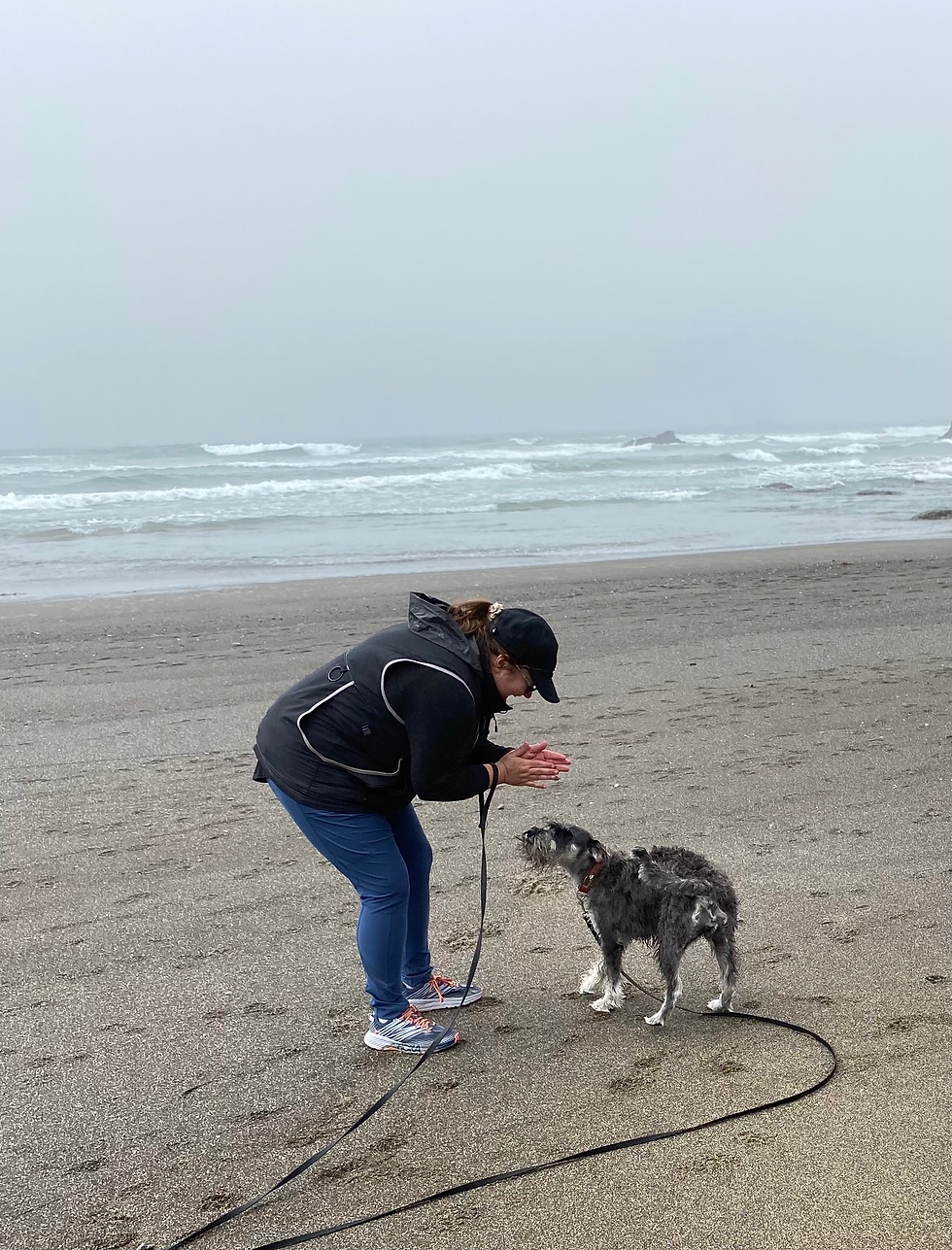The Hidden Power of Sleep for Dogs Struggling with Separation Anxiety
- beverly538
- Jul 16
- 4 min read

When you’re supporting a dog who struggles with being left alone, it’s easy to focus on what happens when you’re walking out the door. But one of the most overlooked — and powerful — pieces of the puzzle is sleep.
Understanding your dog’s sleep patterns can help you both live a better life together. Just like people, dogs need restorative rest to function well emotionally and physically. And for anxious dogs, sleep can be a signal — not just of relaxation, but of safety and trust.
dog sleep and separation anxiety
Where They Sleep Matters Less Than How They Sleep
One common worry dog guardians have is when their pup chooses to sleep near the door while they’re gone. Here’s the truth:
If your dog is comfortable sleeping by the door, that’s absolutely fine. For many dogs, it’s the best of both worlds — a spot that feels secure, where they can settle, and where they’ll be the first to know you’re home again.
If that’s your dog’s chosen spot, make it cozy. A comfortable bed, blanket, or mat can help signal that this is a safe place to rest. And if your dog can nap there peacefully while you’re away, that’s a big win in their alone-time progress.
Also consider the environment: research shows that rising temperatures and extended daylight reduce nocturnal sleep, while daytime sleep is decreased by loud environments and stress, as indicated by elevated cortisol levels Carreiro et al., 2022🧠. So, when planning your dog’s rest space, cool, quiet, and dimly lit conditions can make a real difference.
📬 Want more supportive insights like this? Join my newsletter for tips on helping your dog feel safe and secure when home alone.
Dogs Don’t Sleep Like Humans Do
Dogs have polyphasic sleep cycles, meaning they nap multiple times throughout the day and night. Here’s a quick breakdown:
Short naps (20–30 minutes) are typical throughout the day
Longer sleep periods (4–6 hours) often happen at night
Puppies and seniors need significantly more — up to 18–20 hours per day
It’s uncommon for dogs to stay motionless in one spot for very long stretches. So, if you’re unsure whether they’re truly resting while you’re away, consider setting up a camera to see what’s really happening. You might find that your dog is napping and waking naturally, rather than remaining hyperalert the whole time.
Sleep Reflects Emotional Safety
Several studies show that the quality of sleep in dogs is deeply linked to emotional experiences and the social context surrounding them.
For example:
Dogs with stronger attachments to their owners show more deep (NREM) sleep and lower brain activity related to vigilance (alpha waves), even in unfamiliar environments Carreiro et al., 2022 🐶.
When dogs experience positive emotional interactions before rest (like petting), they sleep more deeply. Conversely, stressful experiences — such as separation or harsh handling — disrupt REM and NREM patternsKis et al., 2017 🐶.
This means sleep isn’t just a physical necessity — it’s a direct reflection of how safe your dog feels emotionally. If they’re sleeping, especially while you’re gone, they’re not just tired — they’re likely starting to feel secure.
Science Spotlight: Sleep & Secure Attachment
A 2022 study using canine EEG found that dogs with secure attachments to their owners:
Spent more time in restorative NREM sleep
Had lower alpha power, a brainwave associated with vigilance
Showed patterns suggesting better emotional regulation
Even in a novel lab environment, dogs with strong bonds slept more deeply, thanks to the safe haven effect of their human’s presence Carreiro et al., 2022.
👉 Takeaway: When your dog trusts that you’ll return, they’re more able to let go, settle, and sleep.
🐕 If you’re wondering how your dog is really doing when left alone, I offer personalized behavior assessments to help you understand their stress signals — and how to support them. [Learn more about Alone Time Assessments →]
Sleep, Separation, and Behavior
Sleep disruptions in dogs can be more than inconvenient — they can signal deeper emotional or behavioral issues.
Veterinary research confirms that poor sleep impairs emotional regulation, weakens the immune system, and contributes to cognitive dysfunction Montgomery et al., 2021 🧠. This can feed into a cycle of anxiety and restlessness, especially in dogs with separation-related distress.
In fact, a longitudinal study of puppies showed that those who slept at least 9 hours per night in secure, structured sleeping spaces were less likely to develop separation anxiety by six months of age Generation Pup Study, 2024 🐕.
Final Thoughts
Supporting a dog with separation anxiety isn’t just about training — it’s about creating a secure, rest-friendly environment. Sleep is one of the clearest windows into your dog’s emotional state.
So if your dog is resting — even briefly — while you’re gone, celebrate it.
That sleep is a signal: they’re starting to feel safe enough to let go.
💡 Ready to help your dog rest easier?
📱 [Follow me on Instagram for real-time insights @headoverheels147]




Comments